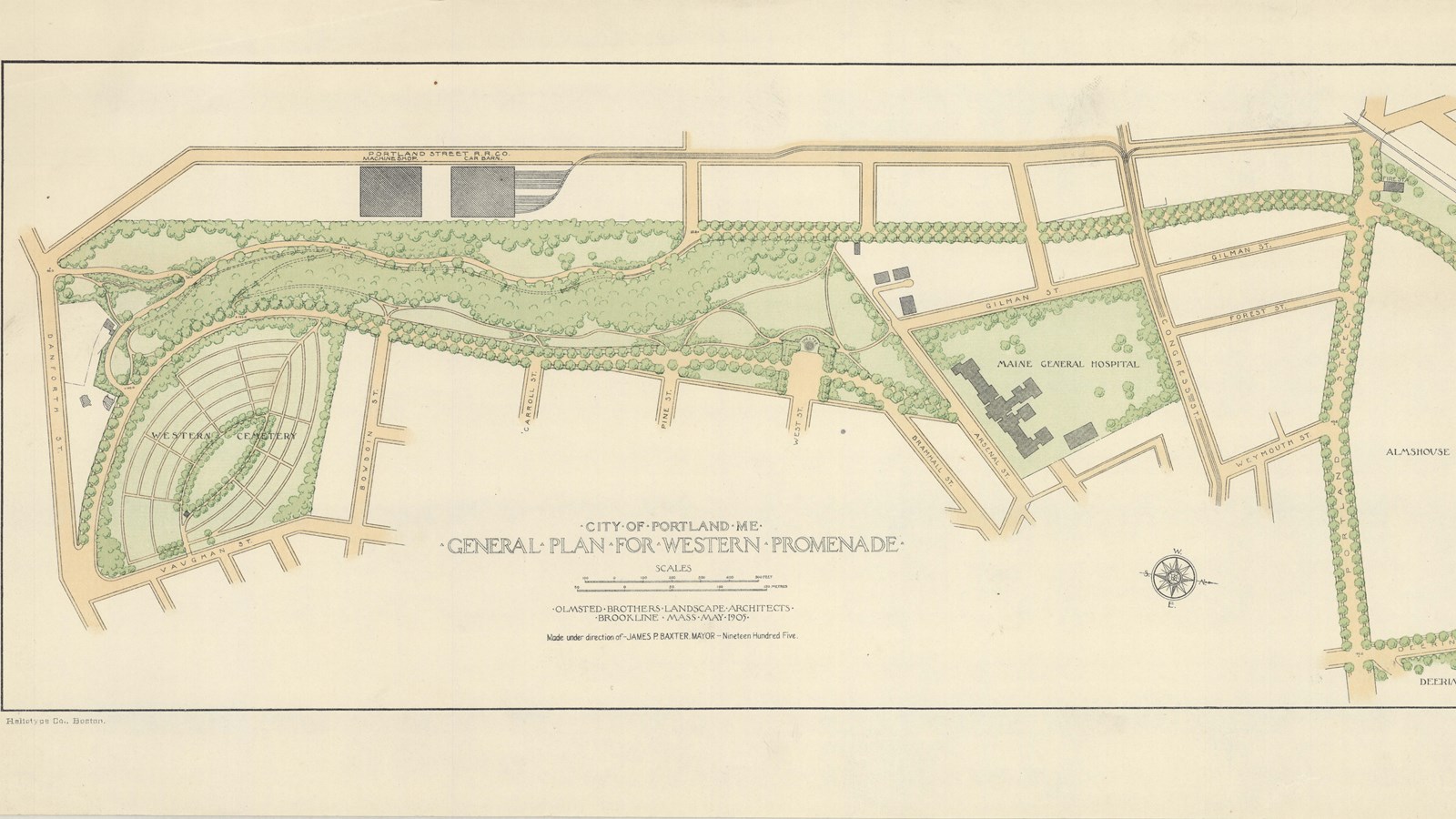Last updated: June 12, 2024
Place
Western Promenade

Olmsted Archives
Quick Facts
As early as 1836, Portland started acquiring land on the peninsula’s western bluff, as it had been known for its stunning scenery and views, as well as increased public pressure for open green space in the increasingly urbanized area. By the 1870s a tree-lined drive had already been built along the bluff, but it wasn’t enough for Portland’s residents.
In 1905, Portland Mayor James Phinney Baxter hired Olmsted Brothers to design a landscape plan for the park, as well as to develop a master plan for all the city’s parks. On the Western Promenade, John Charles Olmsted led the design work, with firm apprentice Henry Vincent Hubbard assisting.
In addition to improving the Western Promenade, Olmsted’s plan also connected the park to nearby green spaces, creating a park system modeled after Boston’s Emerald Necklace. On the Promenade’s twenty-five acres, Olmsted designed space for peaceful strolling and socializing by horse and carriage, though he didn’t include areas for structured recreation.
Although Olmsted’s proposal for a formal plaza was not implemented, the Western Promenade’s strolling paths, lawns, and allées resemble the original design intention.
Source: "Western Promenade," The Cultural Landscape Foundation
For more information and primary resources, please visit:
Olmsted Research Guide Online
Olmsted Archives on Flickr
In 1905, Portland Mayor James Phinney Baxter hired Olmsted Brothers to design a landscape plan for the park, as well as to develop a master plan for all the city’s parks. On the Western Promenade, John Charles Olmsted led the design work, with firm apprentice Henry Vincent Hubbard assisting.
In addition to improving the Western Promenade, Olmsted’s plan also connected the park to nearby green spaces, creating a park system modeled after Boston’s Emerald Necklace. On the Promenade’s twenty-five acres, Olmsted designed space for peaceful strolling and socializing by horse and carriage, though he didn’t include areas for structured recreation.
Although Olmsted’s proposal for a formal plaza was not implemented, the Western Promenade’s strolling paths, lawns, and allées resemble the original design intention.
Source: "Western Promenade," The Cultural Landscape Foundation
For more information and primary resources, please visit:
Olmsted Research Guide Online
Olmsted Archives on Flickr
